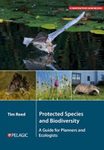![Strategic Environmental Assessment in Action Strategic Environmental Assessment in Action]()
Click to have a closer look
About this book
Contents
Customer reviews
Biography
Related titles
About this book
This practical guide, written by a practitioner for practitioners, presents a coherent and straightforward 'how to do it' approach to the strategic environmental assessment (SEA) process. Part I provides an overview of the aims, principles, advantages and problems of SEA as well as looking at key SEA regulations and their requirements. Part II examines the SEA process in considerable detail including setting the policy context, describing the baseline, identifying alternatives, predicting and evaluating impacts and using the SEA information in decision-making. Part III is devoted to assuring SEA quality with a discussion of resources and capacity building. This new edition incorporates five years' worth of practical application of the SEA Directive and SEA practice more broadly.
Additions and updates include: the findings of various reviews into SEA effectiveness and efficiency; emerging approaches to identifying and comparing alternatives, cumulative impacts, the likely future baseline without the plan, documenting changes made to the plan in response to the SEA process, and environmental limits; consideration of both the 'baseline-led' and the 'objectives-led' approach to SEA, and the two approaches' advantages and disadvantages; and, SEA's links to 'appropriate assessment' of plans under the European Habitats Directive. Employing a host of real-life case studies and examples, each chapter presents a range of techniques and discusses what the final product should look like. Appendices provide a wealth of additional information including text of the SEA Directive and the UNECE Protocol on SEA, and a 'toolkit' of SEA techniques. The approach and techniques in "Strategic Environmental Assessment in Action" are useful for anyone carrying out or studying SEA at any level, from policy to programme, international to local, but particularly for practitioners responsible for implementing the SEA Directive.
Contents
SEA - an overview; the SEA Directive and UNECE SEA protocol; the SEA process as a whole; setting the context for SEA; describing the environmental baseline, identifying problems, links for other strategic actions; identifying alternatives; predicting, evaluating and mitigating impacts; ensuring that the SEA is done well and resourcing it; EU Directive 2001/42/EC; UNECE protocol on SEA; SEA prediction and evaluation techniques.
Customer Reviews
Biography
Riki Therivel is a partner with Levett-Therivel sustainability consultants and a Visiting Professor at Oxford Brookes University's School of the Built Environment. She is the co-author of The Practice of Strategic Environmental Assessment (1996) and Strategic Environmental Assessment (1992).



































